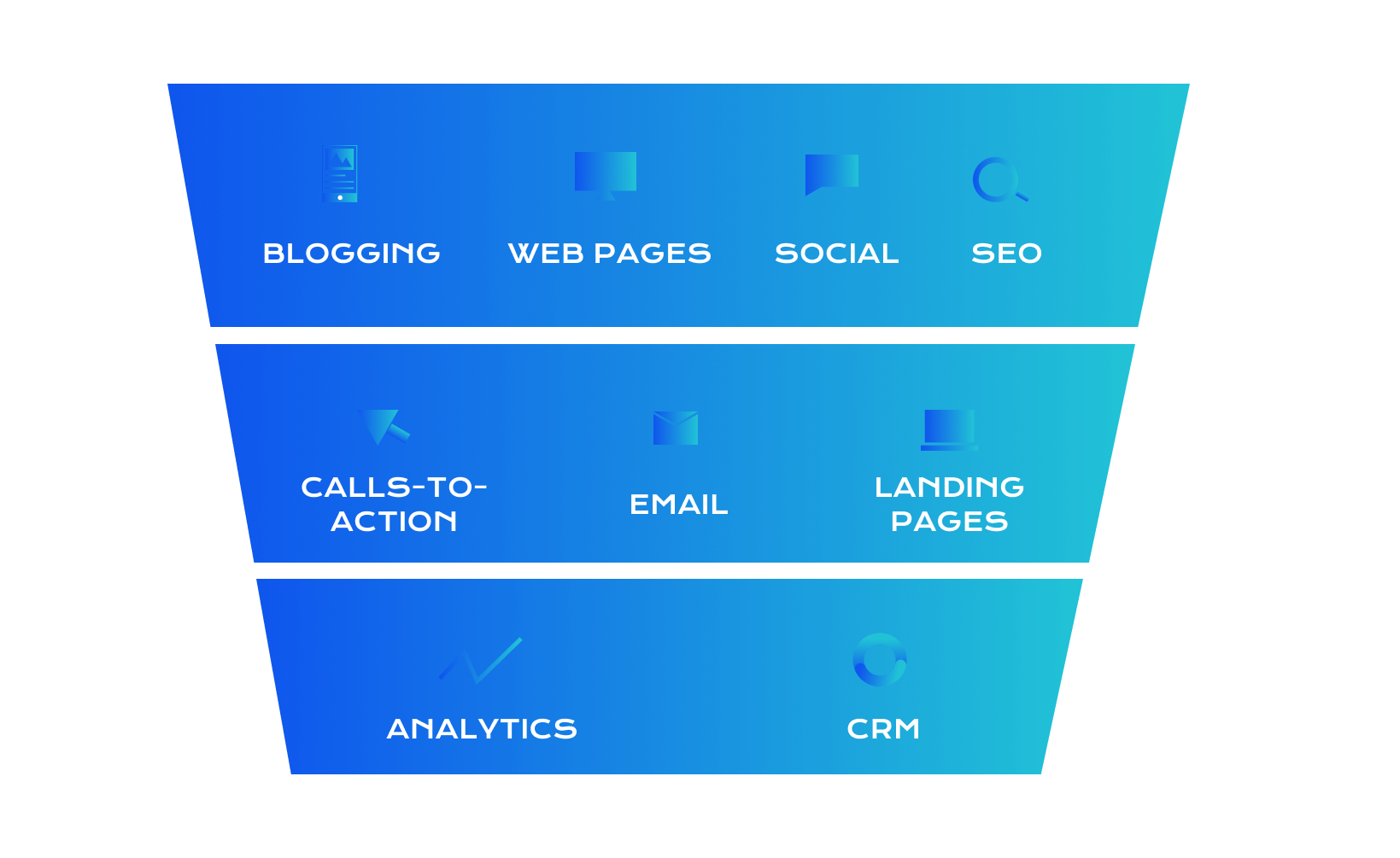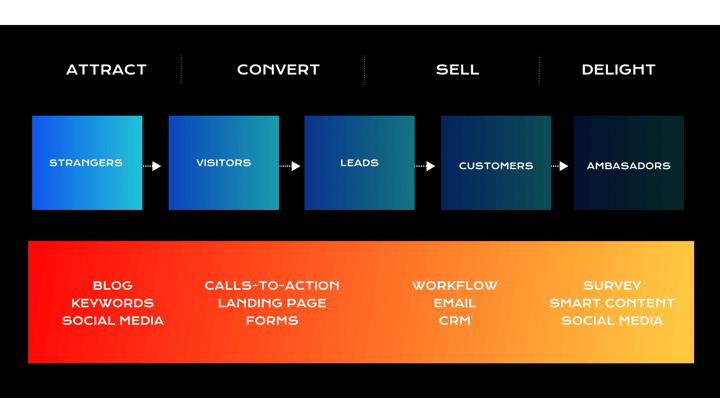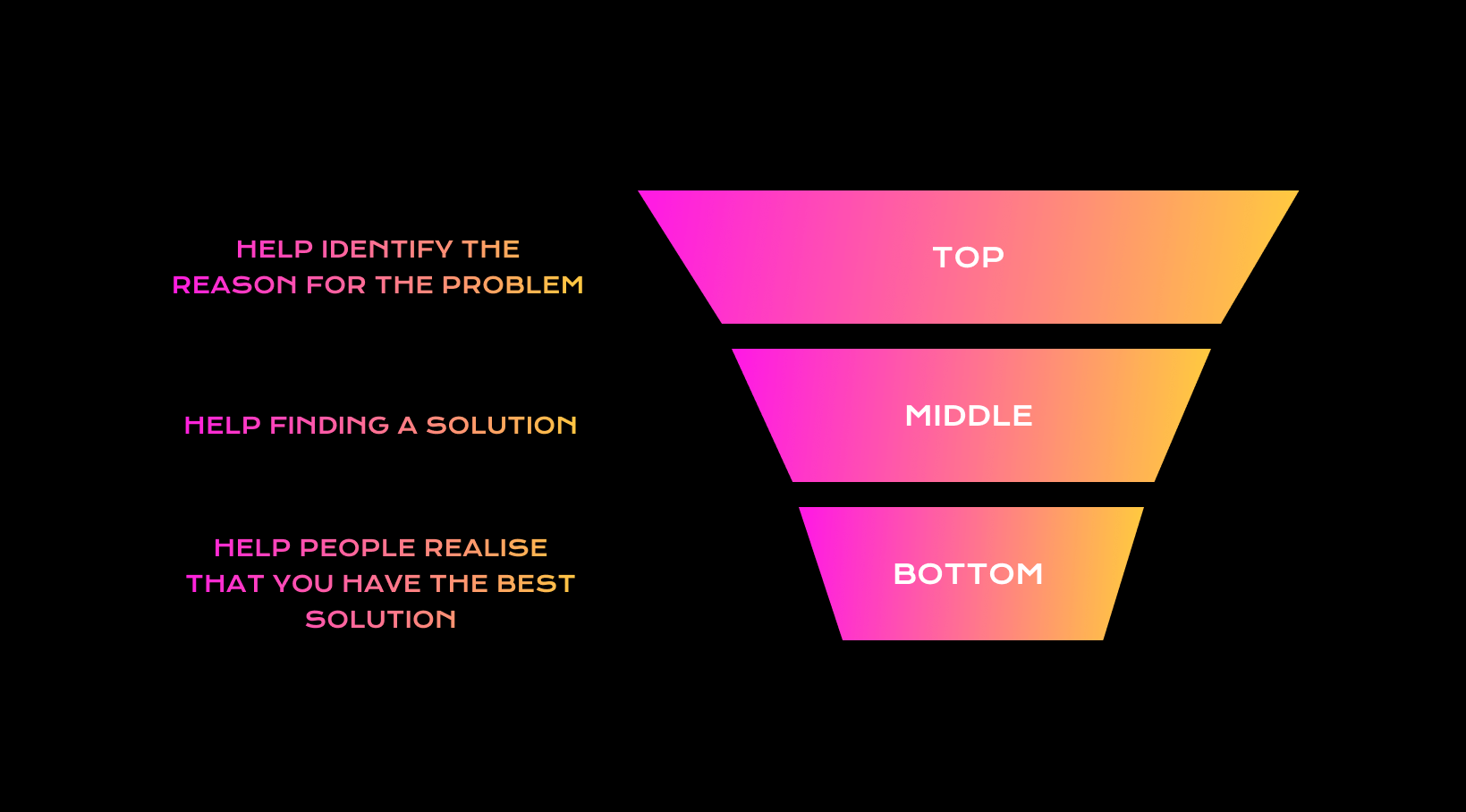Inbound marketing is a marketing methodology which goal is to attract visitors, engage them to become leads and finally delight them when they have become clients. In this blog post we will take a closer look at inbound marketing and what it’s all about, from the basics to why inbound is one of the most efficient digital marketing methods right now.
What you'll find on this page:
- How to explain inbound marketing in a simple way
- Let’s get back to basics
- What’s the difference between outbound and inbound marketing?
- The methodology
- The importance of company blogging
- Is inbound marketing the solution to the challenges of the modern marketer?
- Briefly summarised: What is inbound marketing?
How to explain inbound marketing in a simple way?
Many people struggle to explain the concept of inbound marketing in a simple and understandable way. Even those of us who work with inbound on a daily basis might struggle to find a short and easy explanation. However, this is HubSpot’s definition:
"Inbound marketing is a business methodology that attracts customers by creating valuable content and experiences tailored to them. While outbound marketing interrupts your audience with content they don’t always want, inbound marketing forms connections they are looking for and solves problems they already have."
When an inbound lead is warm enough, it is sent over to the sales department. Based on the content the lead has downloaded, the information they have typed into the form and the pages they have visited on the website, sales get a better understanding of what challenges the lead are facing and how the salesperson is best able to help. And it doesn’t stop here: After a lead has become a customer, inbound marketing will make sure to keep on adding value and engage customers so that they become more satisfied and a loyal ambassador for your company.
The rest of this article will provide you with an understanding of inbound marketing. However, if you want to dig deeper into the subject we recommend that you download our guide to inbound marketing. It consists of over 40 pages with inbound marketing and sales, and give you a much more comprehensive introduction to the methodology.
Let’s get back to basics
Inbound marketing consists of:
- Business blogging
- Social media
- CTA’s (calls-to-action)
- Landing pages with forms
- Downloadable content that is placed behind forms
- Marketing automation
- Paid social
What is the difference between outbound and inbound marketing?
Outbound marketing is what you might already be doing. It is the traditional way of communicating with potential customers through trade shows, email blasts to purchased lists, billboards, TV advertisement and so on.
This way of getting your message out to as many people as possible has proven to not be very effective for most companies, as well as often being impossible to track the success rate of. What worked and what did not?
Outbound marketing implies that those receiving the message have no say in how they wanted to receive it (or if they want it at all). Traditional marketing treats customers as uninformed individuals.
That’s why people have begun to relate marketing to spam, why it feels so invasive, and why the tree fell but no one heard a sound. That’s why there was a need for a new kind of marketing: inbound.
-1.png?width=720&name=1%20(1)-1.png)
Inbound marketing is the opposite to outbound marketing. It is permission-based marketing. Here you start by identifying the people you are trying to reach, what they do, what they are worried about, how they behave online and what questions they want the answers to.
These people are your personas. Then you create the content that they need in order to make their decision.
“Inbound marketing focuses on creating quality content that pulls people toward your company and product, where they naturally want to be. By aligning the content you publish with your customer’s interests, you naturally attract inbound traffic that you can then convert, close, and delight over time.” - HubSpot

Read more: 3 easy strategies to use when writing for inbound marketing.
Solve your customers’ challenges – before you start selling
Inbound marketing is a type of digital marketing that helps you reach out to your customers much earlier in their buying process than what you do today if you use outbound marketing. Want to know the truth?
Most of the content companies have on their websites today is about how fantastic their products are and why they are the best supplier in their industry. There’s nothing wrong with a little bragging, however, this does not answer the questions your customers have at the beginning of their buying process.
They are trying to figure out how they will be able to solve their problems and challenges and is not at all concerned with what specific solution they should choose or which supplier to go for. At least not yet.
Inbound marketing is all about creating content that will help those potential customers from the very beginning of their buyer’s journey and guide them all the way to making a buying decision.
The methodology
Inbound marketing is a methodology that focuses on attracting customers through relevant content that is of help to these customers – not just another disturbing element in their daily life.
After you have attracted visitors to your website the inbound methodology will help you engage them so they become leads, in the end, ambassadors.
 In contrast to outbound marketing, inbound marketing does not fight for all your potential customers’ attention. By creating content that is tailored to your ideal customers’ challenges and needs, inbound marketing will help you attract more qualified prospects and build up your company’s reputation and credibility.
In contrast to outbound marketing, inbound marketing does not fight for all your potential customers’ attention. By creating content that is tailored to your ideal customers’ challenges and needs, inbound marketing will help you attract more qualified prospects and build up your company’s reputation and credibility.
Considering today’s customer in average complete 60 % of the buyer’s journey before they speak to a salesperson it is your job to be present when they begin their buying journey. I’ll let you in on a secret: Not many companies are.
As we have mentioned before, most companies are more concerned writing about why they are the best rather than actually answering the questions their buyer personas have throughout the buyer’s journey.
That is why you should have a company blog. Here you’ll need to blog about the right topics and answer the questions your personas have at the very beginning of the buyer’s journey, when they start looking for the right solution and when they evaluate different suppliers.
That makes three different stages in the buyer’s journey that you need to cover with helpful and relevant content.
 With the help of marketing automation, you can guide your leads from one stage of the buyer’s journey to the next and thus pull them through the funnel. In order to do this, you can offer downloadable content that you put behind forms.
With the help of marketing automation, you can guide your leads from one stage of the buyer’s journey to the next and thus pull them through the funnel. In order to do this, you can offer downloadable content that you put behind forms.
As soon as a visitor has filled out a form and is registered as a lead you can start analysing what people are doing on your website. This way you’ll know what different leads are most interested in and when a lead is warm enough to be forwarded to the sales department.
What happens when sales get in touch with the lead? Well, the salesperson can easily see what specific pages the person has viewed, what ebooks he or she has downloaded and which social media posts the person has clicked.
This is the very recipe for closing more deals. Why? Because it makes it so much easier for both the marketing department and the sales department to treat the lead right – meaning a salesperson never make contact with a person that hasn’t shown any interest for the company’s products and that you always know what content to offer the prospect in order to help.
A customer that simply feels like your company is there to help and solve his or her problems is a happy customer – it’s that simple.
Why blogging alone isn’t enough
Blogging is good, however, it isn’t enough on its own. Before you get started producing content you’ll go through a pre-project. This is where you’ll come up with a strategy that is tailored to your audience, or personas, as we say in the inbound-world. Briefly summarised, you should go through a process that looks something like this:
- Persona workshop – This is to define your company’s specific personas. All the content you produce should be tailored to these personas, the social media audience should be based on this, and the website and language should be optimised for your personas – not the web designer’s preferences.
- Buyer's Journey Workshop – This is the workshop where you’ll define your customers’ buyer’s journey. Is there any information you lack on your website that makes the buyer’s journey challenging for many people? How can you optimise the website for their buyer’s journey and where does the blog fit into the picture?
- Content workshop – Plan the content you’ll be creating for each persona, both blog posts and downloadable content.
- Strategy – The last thing you’ll need to do is to gather all of this into a strategy plan. In order to reach the goals you have set you’ll have to follow this plan and constantly update it. Who’s in charge of following up leads? What campaigns do you have for different personas? Who will be writing what? What software will you use to implement and carry through the different elements of the inbound commitment? We prefer HubSpot.
When you’ve done all this you’re ready to fly!
"Inbound marketing" – just a fancy expression?
We’ve gotten this question more than just once. Is inbound marketing just another fancy expression for digital marketing and content marketing? No, it’s not. It’s true that it entails elements from both of these worlds – but also so much more. The big difference? This time it’s all placed in a system.
HubSpot defines digital marketing as “an umbrella term for all of your company's online marketing efforts.” This means that inbound marketing is a type of digital marketing.
Content marketing, on the other hand, is often explained as a type of marketing where you focus on creating and sharing content that is of interest to the company’s potential customers.
Inbound marketing takes the brilliance of content marketing but also include other elements to get the best of both worlds. Other important elements in the inbound methodology are, for example, calls-to-action (CTA’s) to guide the leads through the buyer’s journey and lead nurturing using marketing automation.
Is inbound marketing the solution to the challenges of the modern marketer?
According to a research from HubSpot, State of Marketing 2021, 47 % of marketers say their biggest challenge is to generate enough traffic and leads. The second largest challenge is to measure ROI on their marketing activities.
You’re not alone in defending your marketing budget. But in order to do this effectively, you have to be able to answer questions like “How much money did we make on marketing activities this year? Which activities and initiatives gave the best results?” The truth is, very few people are comfortable answering these kinds of questions. Why? Because they have no specific answers.
One of the things we love the most about inbound marketing is that it gives the marketer the very basis for answering these questions.
You suddenly know exactly which marketing initiatives that were profitable and after a while you’ll also sit on a bunch of data on which audiences are the most profitable, whether or not you earn more on the leads coming from LinkedIn versus the leads from Facebook, or if some type of content convert more leads and customers than other types.
With this knowledge, it is easier for you as a marketer to make more informed choices on where to place your money and resources. Also, you can sit back and tell the management:
“We spent X money on marketing and I can prove that we earned X money on sales from inbound marketing, which gives us an ROI of X.” Pretty awesome, right?
Everything has changed - and so should your marketing
Consumers and technology alike have developed. We’ll let the numbers speak for themselves: According to Forbes, 81 % of consumers have searched for information online before making a purchase.
That is why we need to stop treating customers on the foundation that they don’t know what they want. This means you no longer need to walk around and strive to scream the loudest about your company’s products or services. With inbound marketing, you don’t need to look for customers at all, because the customer finds you.
Briefly summarised: What is inbound marketing?
Inbound marketing is about offering relevant and useful information. The methodology consists of these three stages: attract, engage and delight. Each of these stages should offer potential customers different information, based on where the customer is in their buyer’s journey.
Is the person ready to buy or are they just reading up on their challenge? Is this the type of customers your company wants? Each stage of the inbound process answers these questions and helps you establish a relationship with the customer – also after the deal has been closed.
This is the very foundation of inbound that makes the methodology so brilliant and successful. Inbound lets you take into use the many different marketing techniques you might already have started implementing, like SEO, content marketing and social media.
Attract more potential customers, treat them as human beings and delight them with fantastic content that is relevant and useful for these exact people. This is inbound.
Want to learn more about inbound marketing? Download our free guide that introduces you to everything you need to know about this type of marketing and sales via the link below.
Real Growth. Real Impact.
'Should I use HubSpot?' 32 fundamental reasons why you should
21 cost-effective marketing campaigns you can create right now
Breeze: Everything you need to know about HubSpot's powerful AI
INBOUND 24 learnings and updates
Google Search API leaks: All you need to know [LIVE BLOG]
The top 6 marketing challenges of 2024
Inbound vs outbound marketing: What's the difference?
See why enterprises choose Avidly
Let’s build your HubSpot success story
Compelling final call to action - with accompanying link to Contact page





![Google Search API leaks: All you need to know [LIVE BLOG]](https://www.avidlyagency.com/hs-fs/hubfs/cloud.jpg?width=400&height=225&name=cloud.jpg)


